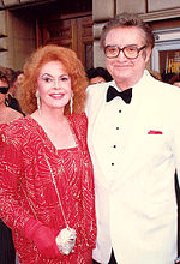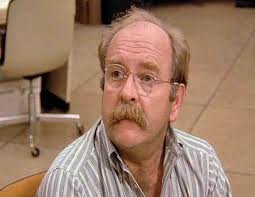
Once upon a time, in order for a NFL team to move to another city a three-fourths majority vote by the other owners was mandatory. The Raiders changed all that. The owners had rejected Oakland owner Al Davis’ request to relocate from Oakland to Los Angeles to which he moved the team anyway, filed a lawsuit and won.
Baltimore Colts owner Robert Irsay wanted a better stadium and a better stadium deal. In 1972, a proposal was presented to build a magnificent stadium complex located next to Camden Yards including a stadium called the “Baltodome.” But the proposal did not receive enough support to pass the Maryland legislature to which then-Governor Marvin Mandel axed the project altogether.
Irsay approached other cities for relocation including Jacksonville, Indianapolis, Birmingham, Memphis, New York and Phoenix. He asked for a league vote to approve any such move. The owners, fresh off the Raiders debacle, didn’t vote “yes” or “no." They simply stated that the Colts possible move wasn’t a league matter but rather a team matter.
So, the Colts left Baltimore for Indianapolis in 1984.
The City of Baltimore was suddenly without pro football. At the same time, the stadium problems Irsay had in Baltimore Browns' owner Art Modell was going through in Cleveland. So, Modell moved his Browns to Baltimore with the incentive of a new stadium, located next to Camden Yards. How ironic.
But something happened in this relocation that has never occurred before.
After legal actions were filed against Modell and the Browns, eventually Cleveland accepted a legal settlement from the NFL. The conditions of the settlement were exclusive to this situation: the Browns nickname, colors, player history, awards, records, logo, achievements, and even team history, would not accompany Modell to Baltimore but would remain in Cleveland.
In addition, Cleveland would get another team either by expansion or by relocation of an existing team. In the meantime, the newly relocated former Browns Baltimore team needed some identity, like colors, a new nickname, and a logo.
A “name-the-team” contest was held. Baltimore management poured through the entries and came up with a list of 17. From there, it was narrowed down to six and then to three: Americans, Ravens and Marauders. The last step was for the fans to vote on the final three entries. From the 33,288 voters, "Ravens" won out to honor author Edgar Allan Poe, who lived and is buried in Baltimore.
Four years later, the franchise would win Super Bowl 35.
Origin Facts:
Established: 1996
Original Owner: Art Modell
Original Colors: Purple, black, gold & white
First Stadium: Memorial Stadium, seating 53,371
If you've been known to get a little messy at the dinner table, then we've got a meal that's just right for you! Try our Sloppy Joe Meatball Sandwiches for a hearty, saucy, and totally delicious way to take a trip down memory lane. Plus, the frozen meatballs are a great shortcut! This way dinner will be fantastic and ready in half the time.
- 1 tablespoon vegetable oil
- 1/2 cup diced onion
- 1 small green bell pepper, diced
- 1 (24-ounce) can Sloppy Joe sauce
- 1/4 cup brown sugar
- 1/4 cup water
- 1 pound frozen cocktail-sized cooked meatballs, cut in half
- 5 hard rolls, split
- In a large skillet over medium-high heat, heat oil until hot. Add onion and pepper; sauté 3 minutes or until tender.
- Add sauce, brown sugar, and water; mix well. Add meatballs to skillet; cook covered 10 minutes or until thoroughly heated, stirring often.
- If desired, toast the rolls; spoon on the meatballs and sauce.


On the fourth Monday in September, National Family Day encourages everyone to gather around the table and enjoy a meal together.
The old saying goes, “Families who eat together, stay together,” but did you know they may also be reducing the risk of addiction? According to the National Center on Addiction, families who eat three or more meals a week together reduce a teen’s risk of using tobacco, alcohol, and other drugs.
That’s a fantastic outcome on its own. Family bonding is just a bonus. However, there are more benefits. For example, families who eat together also learn healthy eating habits, eat smaller portions, and are less likely to stress about food.
And back to the bonding – when parents engage with their children over a meal, their relationships are better. They learn responsibility while helping to prepare the meal and cleaning up. Children feel like they are a part of a unit, a team. They connect with the people who mean the most to them and who know them the best. Parents become and remain the people they turn to when the significant problems crop up.
Look forward to conversations about grades, dating, borrowing the car, and moving away. Don’t forget the debates about politics. Our children won’t always agree with us – and that’s ok. Why? Because we raise them to be independent thinkers and to express themselves effectively. These conversations start at a dinner table. They shouldn’t begin when our children’s world turns upside down.
HOW TO OBSERVE
Have a meal with your family. It doesn’t have to be fancy. But it does have to include food and your family. Gather everyone and set the table. Talk to each other. Find out about everyone’s day. Then, commit to having another meal together before the week is out. Take a family photo.
NATIONAL FAMILY DAY HISTORY
The National Center on Addiction declared National Family Day in 2001 as a way to combat substance abuse among teens. Their research showed that teens who ate meals with their families were less likely to fall into substance abuse. They also tend to do better in school and eat healthier.
















